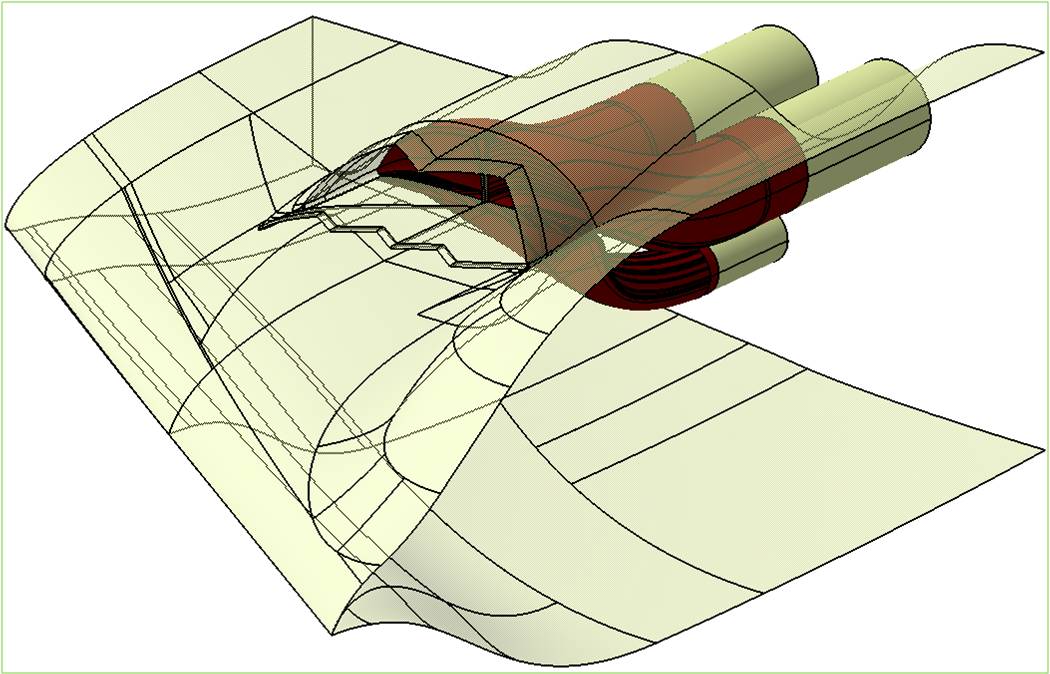Everything is said to be on this, H--20... Let’s take a look at it.
Original: Yankee frame inspection station Yankee frame inspection station 昨天
Recently, I have read the five-episode documentary "Daguo Kunpeng" about the development of Yun-20. Although the development process of Yun-20 is relatively open, when I look at the first few episodes, my heart is still not shocking; but see how "Qin Peng" in a short period of time, from the computer screen It became a big national weapon, especially when I saw the scene of the first flight of the Yun -20 on January 26, 2013 (the "Singing the Motherland" sounded when it landed, it was a big praise), it was still very exciting. of.
At the end of the fifth episode, He Wenjing, the designer of the flight control system of the main flight control law, set himself a new goal, “becoming a leader in international flight control technology” .
Since the first flight of the J-20, the "leading" word in the Chinese aviation industry seems to be no longer so abrupt. For the aviation industry, where Feiwenjing is located, to achieve the "leadership" of flight control technology, it is obviously not an improved version of the Yun-20 or a shipborne early warning aircraft, which may mean that its application model will be In the field of pneumatics and control, there is a major breakthrough compared to the existing models, and the revolutionary may not even be under the 歼-20.
Therefore, many people think of the "egg" in the tail of the 60th anniversary of the aviation industry's West Fly in early May.
Whether it is the official "egg" or the previous rumors, the new generation of large bombers will be based on the layout of the flying wing, which seems to be relatively certain. When it comes to the layout of the flying wing, it is easy to think of a big flying wing like the B-2, and a small flying wing like the X-47B and the "Sword". The flying wing layout, which highlights the performance of the load range and is optimized for stealth performance, does have an irresistible charm in the selection of a new generation of bombers.
The high-wing wing fusion achieved by the flying wing provides a convenient layout, allowing the aircraft to obtain a bomb bay design that is long relative to the length of the fuselage. This is of course a major benefit for the Chinese Air Force, which will rely on large-scale long-range hypersonic weapons to achieve space-based strategic deterrence. [caption under a photo of a B-2]
In the face of the actual needs of the Chinese Air Force, the new generation of large bombers not only set high standards for load range performance and stealth performance; even to meet the penetration indicators in high-threat environments, moderate (note moderate) maneuverability It may be an option that cannot be completely abandoned.
A strategic bomber that is to serve from the second decade of the 21st century to the middle of the 21st century cannot only consider local conflict environments. Taking into account the geographical characteristics of China, it is decided that the strategic bomber cannot fully compensate for the aircraft's penetration capability by the missile range. This requirement is even more meaningful. [caption under a photo of a Tu-160]
This means that our "flying wing bomber" may not even be a simple "red B-2" or "red B-21". The more complex aerodynamic design of the flying wing aircraft, while meeting the maneuverability improvement, must also ensure that it does not lose too much stealth characteristics due to this complexity. The powerful flight control design is involved in the beginning of determining the design index. Coordination can achieve this dream.
[three paragraphs about other bombers omitted]
In short, if the next-generation large-scale bomber under development really meets these requirements of the scorpion, it will be destined to exhibit a "unique" or even "eccentric" feature on the aerodynamics. Whether it is good or bad at the time, the author believes that if it can be created and sent to such a plane, then the Chinese aviation industry will be worthy of the title of "world class".





